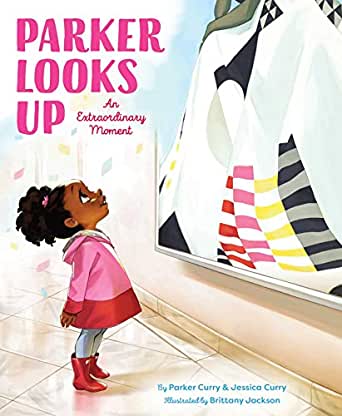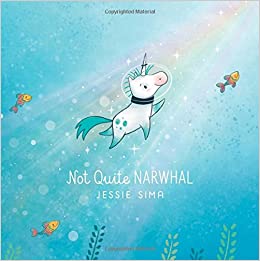I'm Taking Up Space
I still can’t believe it’s 2020. It has been a year, and we still have four months to go. My school in Chiang Mai closed in the middle of March and we transitioned to online learning. We recently opened up with a slew of COVID protocols to mitigate any potential threats of spreading. As of now, we started off strong and we’re maintaining positive momentum as we progress through the first quarter of the year.
I’m grateful that being home with my husband teaching online has given me time to reflect on the past year, my identity as an individual, and my teaching practice overall. I’ve been reading and researching identity and social justice over the past year, but the #BLM protests have really amped my pace and given me a sense of urgency to learn more.
I reflected on what I can do with all of my new learning. Living internationally, I have the privilege of not having statewide mandates or district policies that can stifle effective teaching practices. We have the flexibility and autonomy to tailor our teaching to the needs of our classroom. So, I’ve decided that I need to leverage this privilege in my classroom and school.
I’ve decided to use my voice to take up space.
Often in international contexts, people neglect to incorporate anti racist, anti biased, equitable practices because international schools are somehow immune to the “racism that is pervasive only in the US.”
Racism is not exclusive to the US. It’s everywhere.
So, I decided to mobilize colleagues both in and out of the teaching community.
Here’s some of what I’m doing:
Requesting library books
To my surprise, our school library has a few gems (lots of YA fiction about the black experience and some contemporary picture books with messages about identity, feminism, and social justice), but there’s always room to grow. Our library is fortunate enough to have a consistent yearly budget to order books upon teacher request. What isn’t used for specific teacher orders is at the will of the librarian. Teachers are encouraged to request special books every year, but few take the opportunity.
Over the past few years, I’ve requested dozens of impactful books that I vetted through amazing sites like www.booktoss.com and www.booksforlittles.com. I’ve ordered books like Parker Looks Up, Sulwe, Landed, Freedom Song, The Proudest Blue, Jabari Jumps, The Day You Begin, The Red Bicycle, Two White Rabbits, and many more. We order these books through sites like www.bookdepository.com (which has free international shipping) and we receive orders several times a year.
With the exception of one book , the library has fulfilled my requests. Not only does my classroom have access to these books, I’m also able to recommend them to other teachers as well. Just the other day I recommended The Proudest Blue to a teacher who wanted to start conversations about identity in her class. The kids (and the teacher) loved it.
After getting a solid library of contemporary picture books, I created a public “Social Justice” list on our library website. I can send this list to teaching staff so they can have a list of books to read with their kids without me having to type them out over and over again.
My point is – making change can simply start with asking a question. I didn’t know about our library budget until I asked about it. I think this is particularly important for international schools as they tend to have larger budgets than public schools. However, public schools have access to up to date libraries whereas we may not.
images from Amazon.com
Collaborating with teachers
I discovered Lorena German (@nanegerman) on Twitter promoting her Anti Racism Reading Instruction workbook a few months ago. Needing more specific anti racism resources for my teaching practice, I bought it and slowly worked my through it during quarantine.
It’s an incredible tool that’s changed my teaching practice. It helped me reflect on how white supremacy is present in my own teaching, and it provided specific ways to challenge these learned behaviors in the classroom. While the title states that this is anti racism work for reading instruction, I’ve recommended it to all teachers at my school as the concepts can easily be transferred across all content areas.
To keep this momentum going, I extended the invitation to all teachers to designate a time after school to reflect on the contents of the workbook. So far, we scheduled a date in two weeks for myself and six other teachers to get together to discuss what we learned and how we will apply these concepts into our teaching practice.
The idea is to annotate a master document together (since we all purchased it) to use as a compilation of everyone’s thoughts and reflections. One of our attendants has extensive experience in grant writing, so our call-to-action will be to write a proposal to administration requesting funds for Lorena to provide anti racism, anti biased training for staff. Ideally, the plan is to lead into a discussion with admin about creating a specific equitable, inclusive, and anti racist policy for the school moving forward.
Organize interested teachers yourself; chances are, teachers you know are interested in the conversation and they’re just waiting for the opportunity to have them.
Having Discussions with the Kids
In my experience, educators tend to project their fears and discomforts onto their students. “They shouldn’t be having these discussions” or “This is all too much for them” are common narratives when avoiding conversations about social justice in classrooms. However, we need to give more credit to our students. Many of them ARE ready, and they actually WANT to have conversations about what’s happening in the world around them.
At the start of the year, I sent out a brief bio about myself to my parents which introduced me, my pronouns, and my husband. Again; no remarks were made. In fact, some parents reached out to me and explained how they’re grateful to have a queer teacher for their child.
Then, the year began. On day one, I discussed my pronouns and gender with my first graders. They had questions, of course; I’m likely the first openly non binary person they’ve ever had, and I’m likely the first queer teacher they’ve had. However, they accepted my story as it is. There was no backlash or offensive remarks. They were simply curious.
We continued the first few weeks of school by discussing different identities and honoring the experiences that we all bring to the classroom. I read “from the stars in the sky to the fish in the sea”, which is a story about a gender nonconforming child, by Kai Cheng Thom. We read other books like “Alma and How She Got Her Name” by Juana Martinez-Neal and “Not Quite Narwhal” by Jesse Sima. These books prompted a lot of discussion with the kiddos about identity, respect, and how we can support one another.
“Alma and How She Got Her Name” actually prompted questions about the #BLM movement. At one point of the book, Alma learns that her grandmother joined protests for equal rights. The kids immediately made the connection to the protests going on in the US. So, we talked more about it. I asked questions like “What do you think the protests are about?” and “Why do you think protestors are upset?”. They all knew what was happening. They knew about police brutality. They knew about how black folx are getting killed by police. This prompted further discussion about why it’s important to protest and voice our own opinions, especially when something isn’t fair. We talked about racism, about police being harmful, and how to be an ally when even the things that aren’t fair don’t directly affect you.
Children are more than capable of having discussions about social justice when it’s presented in a way that’s relatable and contextual to a six year old. One resource that’s been inspirational and game changing for me is Woke Kindergarten. Ki (@AkieaG), the creator of the site, shares strategies and resources about ways to explicitly teach social justice to early elementary students.
Before diving into these conversations, though, teachers must do research and learn how to have these conversations. Ijeoma Oluo’s (@ijeomaoluo) “So You Want To Talk About Race” is a great starting point about discussing race in a variety of contexts. This is geared more for adults, but you can use an elementary lens to manipulate these strategies to fit the context of an elementary school. Definitely check out Lorena German’s (@nenagerman) Anti Racism Reading Instruction Workbook that I mentioned earlier as it has also helped me reflect on my own practice and learn ways to incorporate social justice strategies to my teaching (I’m writing a separate blog post about this soon!).
Images from Amazon.com
——————————————–
While I’m excited to be having these successful conversations with students. We’re done with the sixth week of school finished and so far there haven’t been any issues, so until then I’m going to keep moving forward and embed social justice throughout my teaching.





Bravo to the work that you and your colleagues are doing to impact change! Thank you for showing your steps too.
Hello from Portland Oregon, I am a middle school El teacher And follow you on Twitter. I really appreciated the resources you shared in this post and look forward to reading more of your writing.